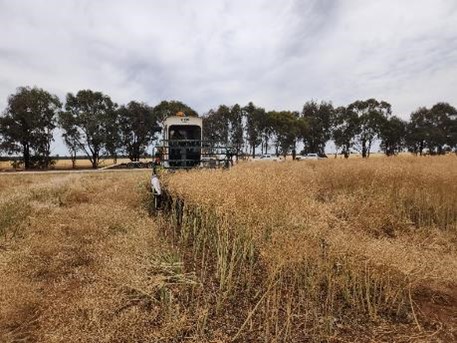A Soil CRC project is investigating innovative cropping and mixed farming practices through the lens of drought resilience and risk management, to help Australian farmers better prepare for future droughts.
While insufficient rainfall is the main limitation to production in Australian farming, most crops yield less than their water-limited potential because of poor use of rainfall and reduced stored soil water capacity. Modest improvements in the extraction of soil water by overcoming subsoil constraints can result in significant yield improvements.
Led by Dr Richard Bell from Murdoch University, the project brings together participants from 5 universities and 6 grower groups to evaluate drought resilience in different farming systems and soils.
With funding from the Australian Government’s Future Drought Fund, the project will extend 7 of the Soil CRC’s existing trials across 4 cropping regions, enabling data collection for up to 8 years on a range of soil types and constraints with varying risk of drought.
Soil CRC CEO, Dr Michael Crawford, said field trial longevity is crucial for understanding drought resilience using amelioration techniques, because soil amendments need time to change soil properties such as soil organic matter, infiltration rates and water holding capacity, and responses may differ yearly due to seasonal variability.
“This project is investigating novel products and approaches to alleviate subsoil constraints and increase water use efficiency, soil health and soil carbon,” he said.
Existing soil amelioration experiments will continue at field sites in Kweda, Bullaring and Wathingarra in Western Australia and Lockhart in New South Wales, while cropping experiments will continue in Burramine and Birchip in Victoria and Gunning Gap in New South Wales.
Amelioration strategies are being assessed using advanced soil chemistry and plant physiology techniques. Soil water content is being determined using novel soil water-sensing equipment developed by the Soil CRC.
The long-term field data is being used to extend our knowledge of resilience of crop yield by Agricultural Production Systems Simulator (APSIM) modelling, and of financial risk using economic analysis.
“This long-term, multi-state research will improve our understanding of the role of these approaches and products on drought resilience, which will better equip farmers with the knowledge they need to prepare for future droughts,” Dr Crawford said.


Project update
The project team has established experiments at each of the long-term field sites. During the 2024 growing season, they took measurements of the crop and soil parameters at each site, capturing data on plant establishment, Normalised Difference Vegetation Index (to quantify plant health), biomass, yield and soil properties.
Data on soil chemistry and physical properties have been analysed for Kweda and Bullaring in WA, and Lockhart in NSW.
The team have developed plans for the 2025 growing season, which includes determining any changes required to the treatments, crop selection for each of the sites, the set of measurements to be taken, and soil sampling for the soil physico-chemical properties.
A Soil CRC PhD student is joining the project team to assist with the economic analysis of crop drought resilience in Australia.
“The project is now well established, and we are excited by the new knowledge our long-term trials will deliver over the next 4 years,” Dr Crawford concluded.


Project participants
- Murdoch University
- Birchip Cropping Group
- Central West Farming Systems
- Corrigin Farm Improvement Group
- Facey Group
- Riverine Plains
- West Midlands Group
- Southern Cross University
- University of Newcastle
- University of Southern Queensland
- University of Tasmania
Funding acknowledgement

This project received funding from the Australian Government’s Future Drought Fund.

